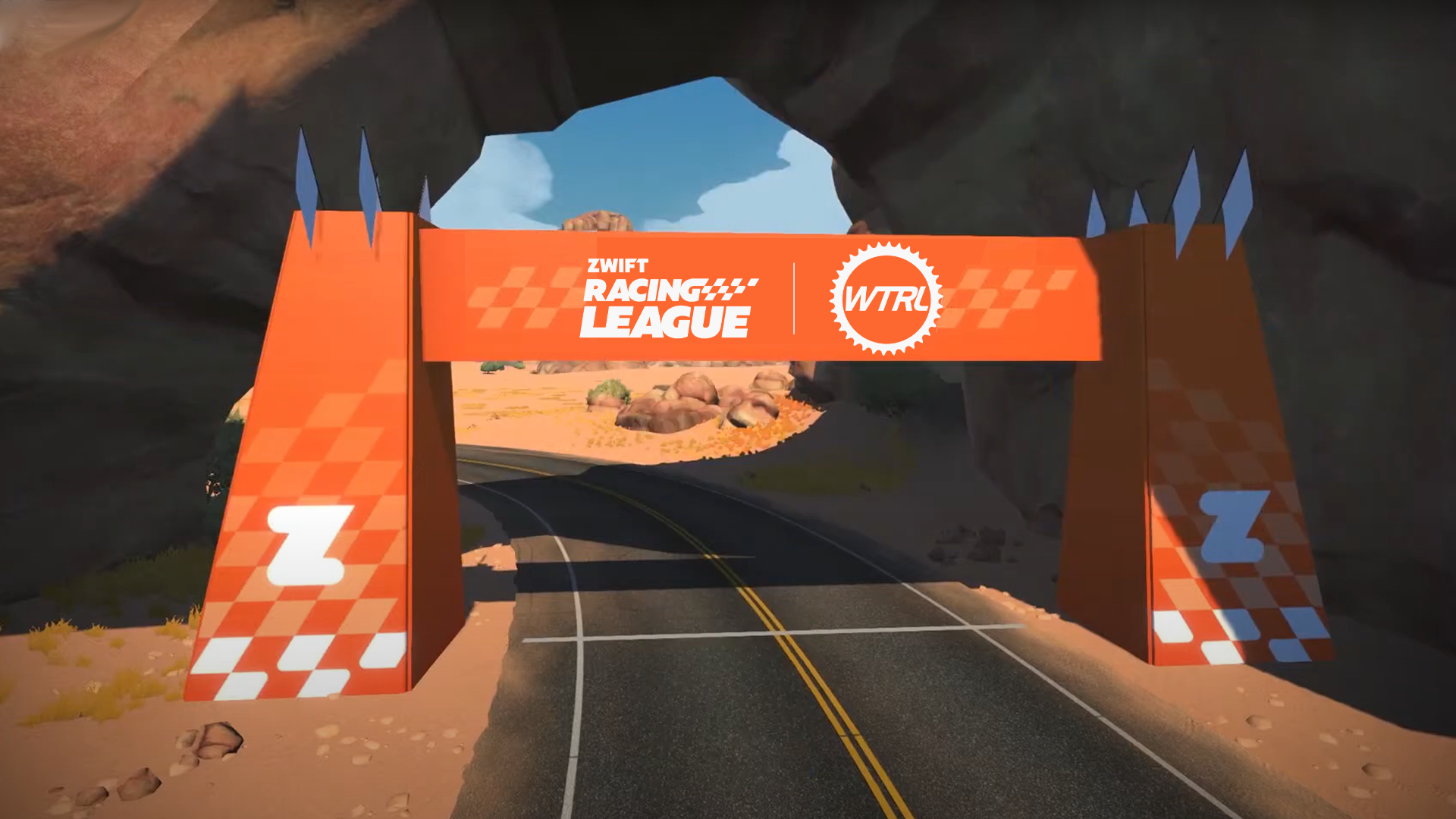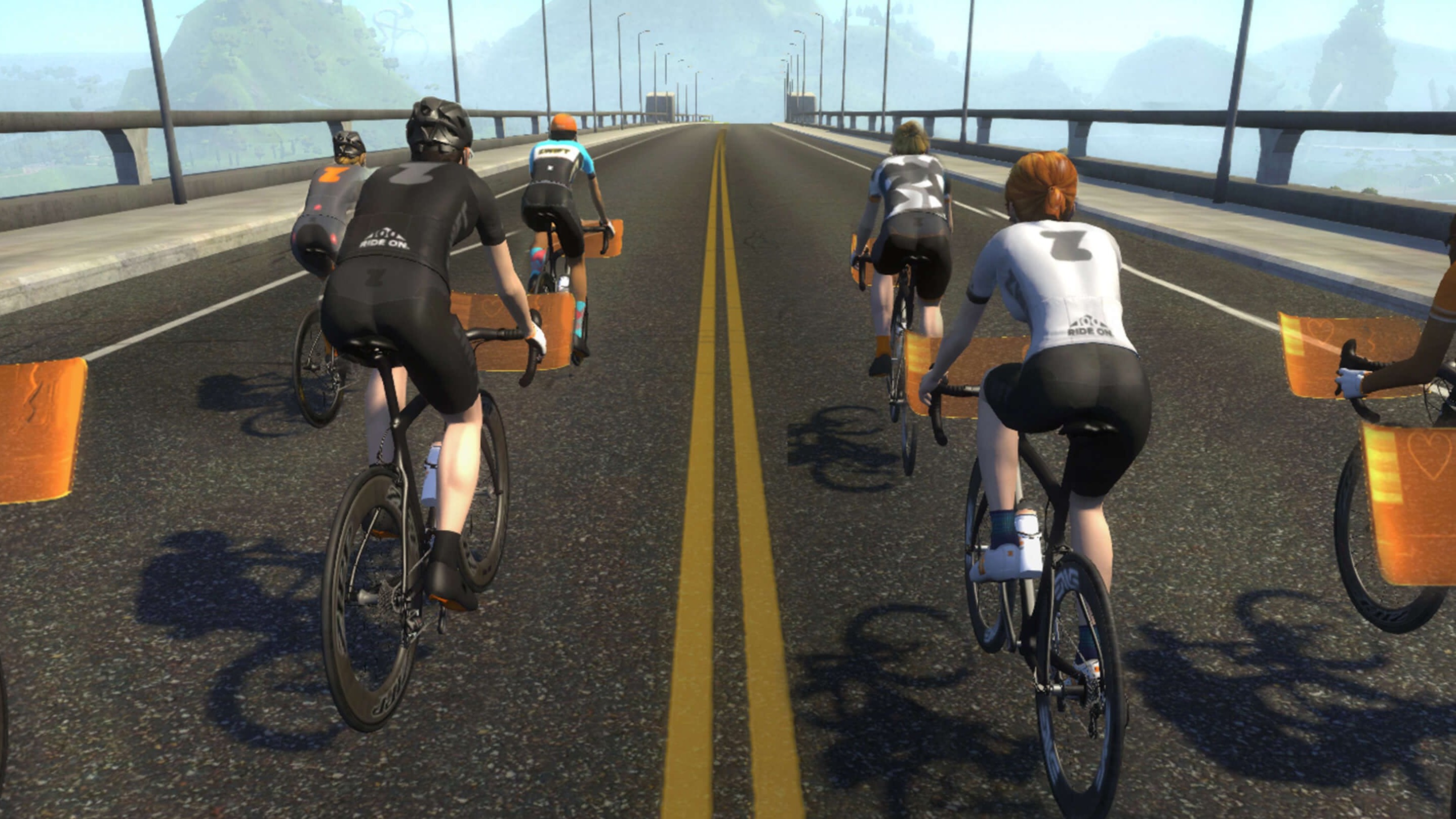Zwift Racing League: What it is and how to join
As Season four of the Zwift Racing League approaches, we take a detailed look at the biggest virtual cycling league in the world

Season one of the Zwift Racing League (ZRL) drew over 5,200 riders from 1,005 teams, representing 101 countries over 25 events. The series has been going strong since October of last year, and after a summer hiatus, the ZRL returns for Season four, from September 29th through November 16th, 2021.
Here's everything you need to know about how to take part, from how to form a team, to the minimal equipment requirements. On this latter subject, be sure to check out our comprehensive guide to indoor cycling, as well as our buyer's guide for the best turbo trainers.
What is the Zwift Racing League?
In partnership with World Tactical Racing League (WTRL), Zwift, Zwift Live, and Zwift Community Live, the Zwift Racing League has become a behemoth of virtual bike racing. Every season so far has consisted of eight rounds of racing, taking place once per week. There are 10 different time zones in which racing takes place, from Pacific S to Americas W. We’ll dive into those details in a minute.
In addition to time zones, races are also broken up into different categories, or divisions, in both Men’s and Women’s events. Zwift ranks riders based on A through D categories, but in the ZRL, leagues are broken up into Divisions one through four, with the stand-alone Premier League on top.
Thousands of riders from thousands of teams have competed in the first three seasons of the ZRL, and with winter on the horizon, the anticipation continues to grow. But what makes the ZRL so appealing, and why is any different from your run-of-the-mill Zwift race?
Points Races and Team Time Trials
One of the most intriguing parts of the ZRL is that it is a team-based and points-based series. Instead of the traditional scratch race-type format that normal Zwift races follow, the ZRL awards points for sprint and KOM segments throughout each race, with even more points on offer at the finish. But not only that, there are two different ways that riders can earn points on a given segment: first across a line (FAL) and fastest through a segment (FTS).
FAL is as simple as it sounds, with the first 10 riders across the segment finish line earning points each lap, from 10 points for 1st down to one point for 10th. The FAL points occur each lap but are different for each and every course, so do your homework before you start and make sure you double-check the pre-race instructions to know exactly where and when FAL points are being awarded.
Get The Leadout Newsletter
The latest race content, interviews, features, reviews and expert buying guides, direct to your inbox!
FTS points are awarded just once – as opposed to each lap – with the fastest 10 riders to pass through a segment within a race earning points at the end of the race. You don’t necessarily need to cross the line first in order to earn FTS points, which creates an interesting tactical approach to each FTS wherein riders often lay back and use the draft of the group to gain free speed over a segment’s duration. The points on offer for FTS are even greater than FAL segments, with 20 points going to the FTS winner, 15 for 2nd, 10 for 3rd, and 7 to 4th down to 1 for 10th.
It’s important to note that the same rider can earn multiple top placings in a FTS. If a rider earns the fastest segment time on lap 1, and the 2nd fastest time on lap 2, that rider would earn 35 points for 1st and 2nd place which would go towards their team’s total. And that brings us to team scoring.
A team can field up to six riders for each weekly race, and each rider can accumulate points throughout the race. At the end of the race, each rider’s points go towards their team’s total, and the team with the most points at the end wins the race. So you don’t necessarily need to stack the finish – I’ve seen teams dominate the FAL and FTS segments throughout the race, not put a rider in the top 10 at the finish, and still end up with the most points at the end of the day.
The individual number of points that a team scores in a given race dictates their placing that week, their placing will then earn them League points, which we'll explain more in a moment.
That’s a lot of talk about points and points races so far, but the ZRL would not be complete without their infamous team time trials. In seasons past, there have been three team time trials (TTTs) per ZRL season, in addition to five points races. The TTTs run like any other TTT: teams go off in 30-second increments and complete a certain course. When all is said and done, the fastest team wins. And just like in the points races, their finishing time does not really matter, rather it is the finishing position that does – 20 points for 1st, 19 points for 2nd, down to one point for 20th.
Time is taken on a team’s fourth rider across the line, and a minimum of four riders must finish in order for the team to earn points towards their league total.

League scoring
As mentioned above, each team earns points based on their finishing position each week. This is broken down as 20 points for 1st, down to one point for 20th. The number of points scored by a team each week has no bearing on their overall point total. In the event of a tie – which is only possible during points races – we go to the finish line camera, and the team with the best-placed rider across the finish line is the winner of the tiebreaker.
Team points are scored each round of each season, and the team with the most points at the end of the season is declared the winner. If there is a tie, then the team with the higher total of rider points (the sum of finish, FTS, and FAL points) is declared the winner, so while the points awarded in a race don't dictate your League points, they can still affect the result via this tiebreaker. And if that still isn’t enough, whichever team placed higher in the final race wins.
At the top of the Zwift Racing League is the coveted Premier League, in which 20 teams from around the world compete live in front of thousands of weekly viewers. Like in Premier League football, Zwift Premier League teams are subject to relegation at the end of each season, with the bottom three teams bowing out. Eligible Division A1 teams compete in the Championship Playoffs ahead of each ZRL season, with the top three teams from the Playoffs being promoted to the Zwift Premier League. More details on eligibility requirements can be found in the WTRL ZRL Rules and Regulations.
ZRL Leagues and Divisions
Division A1 teams aren’t the only ones eligible for promotion, though. In fact, every team in the ZRL is. Each week, the ZRL takes place across 10 different times zones, and within each are Divisions A, B, C, and D. There are a minimum of five and a maximum of 20 teams per division, with the top two and bottom two teams of each Division being promoted or relegated at the end of each season, but only within their respective category.
For example, the top two teams from Division C2 will be promoted to Division C1, while the bottom two teams from Division C1 will be relegated to Division C2.
From around the world, here are the 10 time zones in which the ZRL takes place:
- Asia-Pacific (APAC)
- Europe-Middle East-Africa (EMEA)
- (EMEA) Women’s only divisions
- (EMEA-N) North
- (EMEA-E) East
- (EMEA-S) South
- (EMEA-W) West
- Americas East (AMERICA-E)
- Americas West (AMERICA-W)
Where to find results
Wow, that all sounds really complicated, but that’s where the magic of WTRL comes in. WTRL helps support the Zwift Racing League, from the Premier Division all the way down to Division D. It calculates points totals as fast as possible, and sometimes you can even track them during the race. Results are uploaded to the WTRL website, so you can see exactly where you stack up before heading into the next week.
Before even thinking about the final results, let’s get you on the start line! With so many apps, websites, and partners to use, signing up for the ZRL can be confusing, to say the least. Here’s a step-by-step guide to get you racing in the Zwift Racing League.

How to sign up for the Zwift Racing League
1. Find a group of friends to race with
You can’t race the ZRL alone. In fact, you’ll need a minimum of four riders on your team each week, or you’ll be disqualified. Plus, it’s fun to race with friends!
2. Register for the Zwift Racing League through the WTRL website
To do this, you’ll have to create a WTRL account, which is just like any other website, using an email and a password. Once you’re in, you can choose your category and time zone, and WTRL will slot you in.
Check out our comprehensive guide to Zwift if you're new to the platform.
Important note: riders must register at or below their division category threshold, according to WTRL.
The limits are as follows:
- Division A Men’s: > 4.0wkg FTP & minimum 250W FTP
- Division A Women’s: > 3.7wkg FTP
- Division B Men’s: 3.2-3.99wkg FTP & minimum 200W FTP
- Division B Women’s: 3.20wkg 3.69wkg FTP
- Division C Men’s: 2.5wkg to 3.19wkg FTP & minimum 150W FTP
- Division C Women’s: 2.5wkg to 3.19wkg FTP
- Division D Men’s: less than 2.49wkg FTP
- Division D Women’s: less than 2.49wkg FTP
Large teams can assign a team manager who can register multiple teams. My own team – NeXT eSport – has utilised this role, since we have an elite group of riders who compete in the Premier League, as well as a large group of riders who compete in one of the lower divisions.
3. Appoint a team captain
When you register on WTRL, you appoint a team captain who will be emailed specific race instructions, including private race links for each week. This will be your point of contact between your team and WTRL, in case you have any questions or concerns.
4. Designate a roster of up to 12 riders
For each ZRL season, teams are allowed to register up to 12 riders total and field a maximum of six riders each week. This gives you some wiggle room if riders get sick, injured, busy, or if they are better suited for one week versus another. Roster shuffling is especially useful for teams made up of specialist riders, who could use a roster of climbers one week for Surrey Hills, and a group of sprinters the next on the Beach Island Loop.
5. Do all your pre-race checks
In the weeks leading up to your team’s first ZRL race, make sure you have met all of the requirements set out by WTRL and the Zwift Racing League. For higher categories, this includes, but is not limited to: riders having team tags in their profile name, wearing their assigning in-game Team Kit, the compensatory use of heart rate monitors, and performing height checks and video weigh-ins.
Refer to the complete Zwift Community Racing League Rules and Regulations for more information.
Equipment requirements
The eligibility requirements vary per category in the ZRL, with the higher-end categories running much tighter ships. In fact, Zwift just announced an update to its eSports Ruleset that now requires the use of smart trainers accurate to within +/- two per cent for Premier League Zwift racing.
Thankfully, the equipment requirements aren’t as strict for lower categories:
- Division A riders: must transmits power data directly to Zwift through a smart turbo trainer, smart bike, or classic ‘dumb’ trainer with separate power meter
- Division B, C, and D riders: may use the above, or Zpower
- Riders on Zpower will only be awarded half the points they score in an event, and can only make up 40 per cent of a team for a TTT
Dual recording (recording power data from a source separate from a smart trainer) is encouraged but not required, ZADA verification will be required by at least 2 Division A1 teams each week.
The best heart rate monitors are only required for Division A and above, while smart trainer calibration is required before every race. Zwift may request height and weight verification videos on a random basis from teams of any Division, up to 12 hours pre and 12 hours post-race.
With all that said, there aren’t many strict requirements for Division B teams or lower. As long as you have a way to connect to Zwift through a smart trainer, power meter, or Zpower, you can compete in the ZRL. If you’re targeting Division A races or higher, take a closer look at the WTRL rulebook to make sure you’re up to date on the latest requirements. But for those wanting to dip their toe into the Zwift racing world, you don’t need a whole lot more than a bike to ride on Zwift, a WTRL account, and a desire to suffer.
Enhance your fitness journey from home. Discover our Zwift promo codes and gear up for interactive workouts.
Zach is a freelance writer, the head of ZNehr Coaching, and an elite-level rider in road, track, and e-racing. He writes about everything cycling-related, from buyer's guides to product reviews and feature articles to power analyses. After earning a Bachelor’s Degree in Exercise Science at Marian University-Indianapolis, Zach discovered a passion for writing that soon turned into a full-fledged career. In between articles, Zach spends his time working with endurance athletes of all abilities and ages at ZNehr Coaching. After entering the sport at age 17, Zach went on to have a wonderful road racing career that included winning the 2017 Collegiate National Time Trial Championships and a 9th place finish at the 2019 US Pro National Time Trial Championships. Nowadays, Zach spends most of his ride time indoors with NeXT eSport.